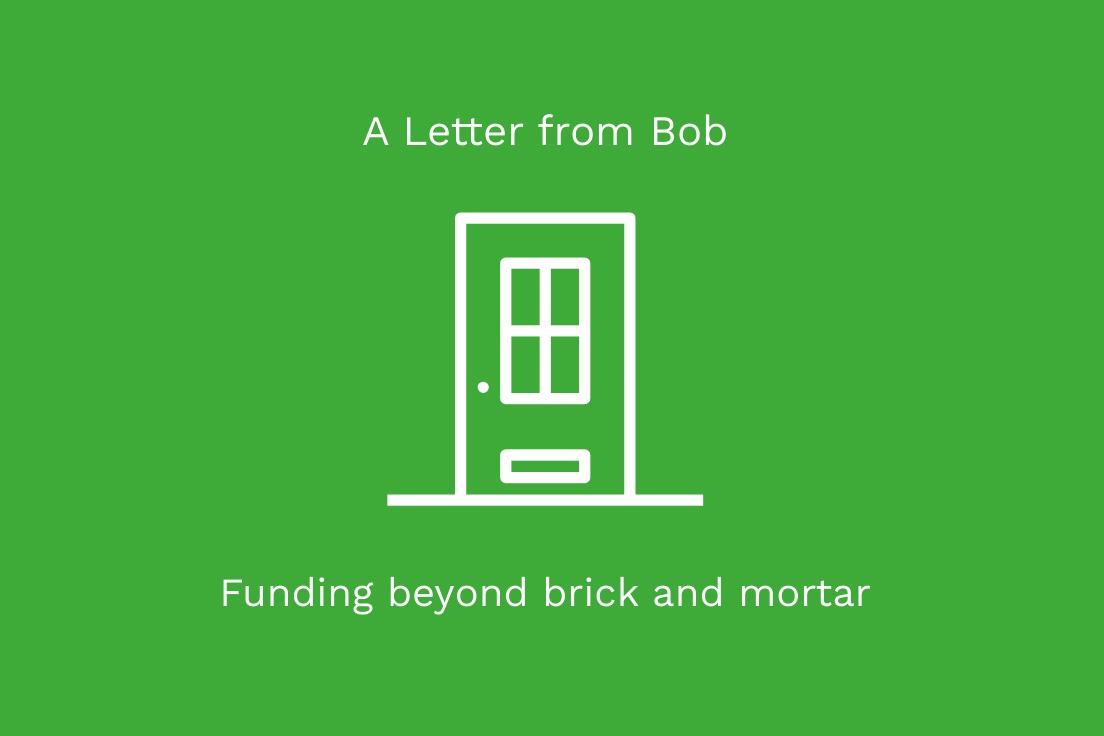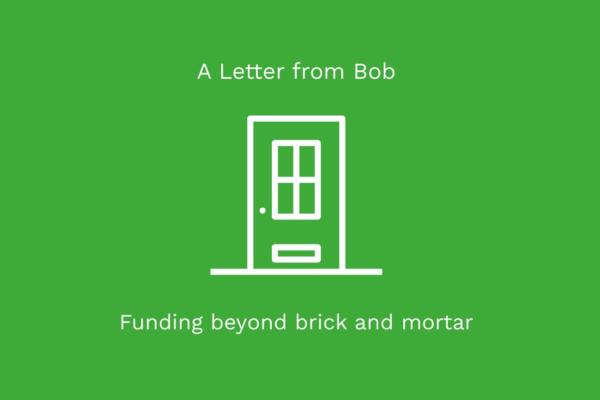Letter from Bob: Funding beyond the brick and mortar
While some private funders will build doors, through our Foundation, we want to influence what happens behind those doors.
While some private funders will build doors, through our Foundation, we want to influence what happens behind those doors.
It is a riskier, messier, no blueprint kind of work. It takes longer and requires many more resources and logistical details than constructing a building. Surprising right? But it is work that has to be done if we are to leave a better world behind us. The current healthcare crisis is a case in point.
Our Foundation has zeroed in on a niche, a capacity gap, a funding gap, an incentive gap, however you want to call it. It is a key gap in publicly funded systems of care. The public funds ( and rightfully so) are focused on the day-to-day [siloed] service delivery aspects. Too little space, time, money, and effort gets allocated to investing, restructuring, and keeping ahead of the user’s desired outcomes and macro conditions. As an entrepreneur, in my experience this is what for-profit organizations are laser-focused on, all the time, constantly fine-tuning their business models. They are good ‘listeners’ much like the front-line community organizations, for different reasons. This ‘listening capacity’ and nimbleness is not built into the public sector, it is not part of its DNA.
Don’t be mistaken, I am not saying, let’s privatize the public sector, nor am I saying let’s only have grassroots organizations. We need scale and we need the flexibility to adapt to unique and complex circumstances. This is the reality of today. I believe as philanthropists we can support the much-needed re-organizing of the care sector, it is clear the sector is ripe for change. By directing our funds to what goes on behind the doors, rather than the doors themselves we can encourage a change in the DNA. We could encourage models that are people-centered and forward-looking as opposed to reactive and too little too late.
The question that remains is: How might we sustainably finance the transformation of systems that deliver big societal returns?


We have other great content, continue exploring below.